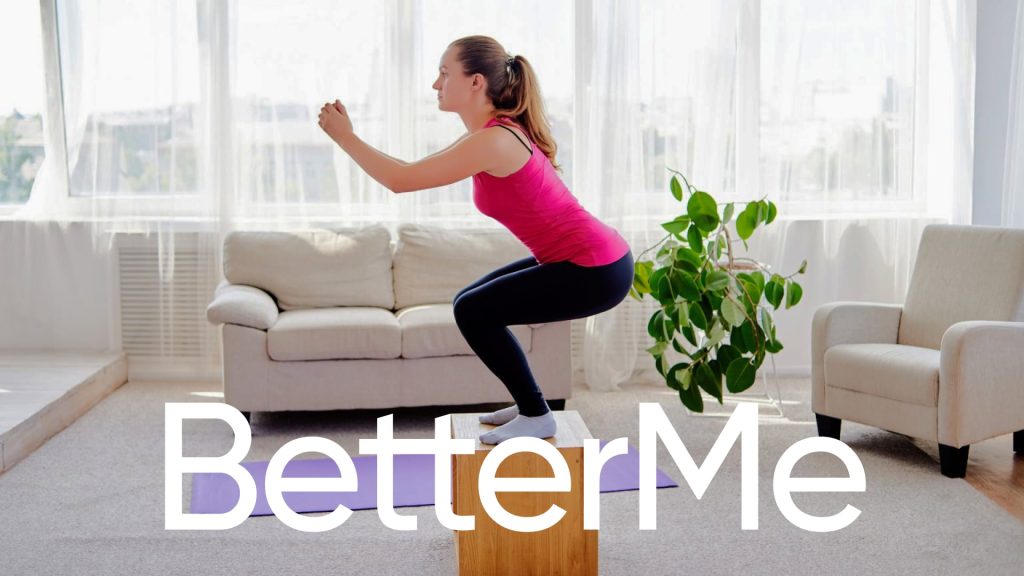Stunted Growth Myth Debunked
Weight loss is one of the most common issues in our society. Thousands of people head to the gym to make their bodies healthier, slimmer and more attractive. Of course, there are numerous effective exercises and dietary plans that can help to reach your goals. There are equally numerous weight loss myths as well, all of which confuse weight-watchers and keep them from sticking to a balanced workout plan. This article will shed light on one of the most common questions in the weight loss world – do squats make you shorter? Read on to find out the answer!
Do Squats Make You Shorter?
This question is quite controversial and has different people sticking to different opinions. It is important to understand that we are talking about weighted squats. Many weight-watchers think that such squats and deadlifts will make them shorter and that’s why they want to avoid these exercises. However, this effect from weighted squats is one of the biggest misperceptions in the workout world.
The fact is that because of heavy weights, which are needed to perform weighted squats and other exercises of this kind, your spinal discs get compressed. The height you can lose during the performance of this type of workout is approximately 3-4 mm, which is only the size of a sesame seed, but many people are afraid to even lose several millimeters. This focus is usually on the height loss itself, ignoring the details of it’s minute size.
Read More: How Many Squats A Day Will Give You That Peach Booty Look?
The Truth About Squats
The truth is that this effect is temporary. Your spinal discs are elastic and get back to their previous form in quite a short period of time. You just should relax, lie down on a sofa or take a nap. In the morning you’ll get back your normal height. From this you can see there is nothing to worry about, and the difference is not only minimal, but temporary as well.
Surprisingly, by performing this type of exercise you can even look taller. No, you won’t be making your bones longer. However, weightlifting training sessions will strengthen your back muscles, which will support your spine and will significantly improve your posture. A straight back will make you look much taller and attractive.
Just remember that your height can fluctuate day-to-day, as well as your weight. According to the study, your spinal shrinkage can be caused even by such simple activities as walking during the day (7). A 3-12 mm shrinkage throughout the day is absolutely normal.
Some Exceptions
Every situation has its exceptions. The same goes for what might happen with using weighted squats to make you shorter.
- If you have some spine curvature disorders, like lordosis or kyphosis (8), and you have weak abdominal muscles or hamstrings, the curve on your spine will increase because of the heavy weights pressure. That’s how you can become shorter. Such an effect can be caused not only by squats and deadlifts, but by any exercises that compress your spine (for example, overhead presses, clean and jerk and more).
To avoid this effect, it is important to balance your training sessions. First, it is crucial to train your entire body, that’s all the major muscle groups, to avoid injuries and increased spine curvature. Second, you should focus not only on strength exercises, but on some softer workouts, such as pilates, yoga, stretching and more. They will not only have a positive effect on your spine and overall health, but on your mental health as well. Massage will give benefits as well.
- Another exception is with Olympic lifters. These people experience huge physical loads and lift thousands of pounds per week for quite a long period of time. Years of extremely heavy squatting may lead to becoming shorter. However, even this change will be rather small. Even after 10 years of such exercising sportsmen may lose approximately 2 cm of their height.
Benefits Of Squats And Other Strength Trainings
Strength training not only does not make you shorter, it has a lengthy list of benefits for your body:
1. Squatting And Lifting Heavy Weights Develops Muscle Mass
Performing squats and weightlifting exercises helps to gain muscle mass. You should perform this type of workout at least 2 times a week (3). In addition, such workouts also help to increase endurance of your muscles.
2. Strength Training Contributes To Weight Loss
If you perform strength exercises, you have probably experienced the after-burn effect. It is also known as EPOC (excess post-exercise oxygen consumption). After a training session your body needs higher amounts of oxygen to cool down. During the process of EPOC your body burns more calories than usually, even when you’re already at rest. This effect can last for up to 21-hour after training. After a certain period of time, this increased energy expenditure adds up, supporting your ability to reduce body fat (1).
3. Strength Training Helps To Transform Your Body
If you focus only on cardio workouts, you will support your heart health and lose weight, but your body won’t significantly change visually. However, if you add strength exercises to your routine, you’ll definitely transform your body by making it stronger and healthier and will get perfectly shaped muscles (1).
BetterMe app will kick you out of the mental funk, shake off your extra weight, rid you off you energy-zapping habits, and help you sculpt the body of your dreams. Intrigued? Hurry up and change your life for the better!
4. This Type Of Training Sessions Can Support Your Mental Health
High-intensity strength training reduces the symptoms of depression. By combining moderate-intensity cardio and high-intensity strength workouts you will get many more benefits, both for your physical and mental health, than with the help of other workout programs (5).
5. Strength Training Improves Balance
Balance is highly important for the proper performance of exercises, especially when it comes to yoga or pilates. Strength exercises will be extremely helpful in this situation by supporting your stability. Numerous strength workouts demand balance and mobility and train not only your major muscle groups, but the smaller muscles as well. In this way your body becomes more stable and stronger (1).
6. Strength Training Support Your Bone And Heart Health
Regular strength trainings contribute to higher bone density. This type of exercise stimulates their growth and repair. Strength workouts support your bone health not only at a young age, but when you get older as well. They also support your heart health and decrease your risks of cardiovascular disease (1).
Read More: Squats vs Lunges: Which One of These Time-Honored Exercises is More Effective?
FAQs
Where Did This Myth Come From?
In the 1960s in Japan a group of researchers noticed a tendency that children performing heavy labor are oftentimes short in stature. The scientists supposed that the reason for the phenomena was in lifting heavy weights. They hypothesized that hard physical load caused damage to the growth plates at the ends of the long bones. Growth plates are thin discs, made up of cartilage, which lengthen the bones of children until the age of 14-16 years (2). However, this hypothesis wasn’t true, the scientists only found the correlation between physical load and short stature of the children. The major cause was that they were underfed, and heavy labor was only a correlating factor.
Can Strength Training Make Young People Shorter?
No, it cannot. That’s just another widespread myth. Many people stop their children from lifting weights, thinking that it might stunt their growth. The height of the person however, is mainly predetermined by DNA. There can also be influence from some other factors, such as nourishment, health status, nourishment of the person’s mother during pregnancy, ethnicity and more (4).
When performed correctly and under control, strength training helps children improve their strength, health status and well-being (6).
The Bottom Line
In conclusion, the answer to the common question “Do squats make you shorter?” is no. As you have probably noticed, there is a wide range of myths regarding physical exercises and their effect on your body. As such, it is important not to believe all the rumors you read on the internet or hear at your gym. You should check all the facts, find out the scientific references and consult the professionals, especially before starting any new workout or dietary plan. Remember that one of the major things you should care about is your health and wellbeing.
DISCLAIMER:
This article is intended for general informational purposes only and does not serve to address individual circumstances. It is not a substitute for professional advice or help and should not be relied on for making any kind of decision-making. Any action taken as a direct or indirect result of the information in this article is entirely at your own risk and is your sole responsibility.
BetterMe, its content staff, and its medical advisors accept no responsibility for inaccuracies, errors, misstatements, inconsistencies, or omissions and specifically disclaim any liability, loss or risk, personal, professional or otherwise, which may be incurred as a consequence, directly or indirectly, of the use and/or application of any content.
You should always seek the advice of your physician or other qualified health provider with any questions you may have regarding a medical condition or your specific situation. Never disregard professional medical advice or delay seeking it because of BetterMe content. If you suspect or think you may have a medical emergency, call your doctor.
SOURCES:
- 11 Benefits of Strength Training That Will Convince You to Lift Weights (2020, livestrong.com)
- Growth Plate Injuries: What You Should Know (2016, health.clevelandclinic.org)
- How to build muscle with exercise (2020, medicalnewstoday.com)
- Is height determined by genetics? (2020, ghr.nlm.nih.gov)
- Neuroscience of Exercise: From Neurobiology Mechanisms to Mental Health (2013, karger.com)
- Strength Training in Children and Adolescents (2009, ncbi.nlm.nih.gov)
- The effects of upper limb loading on spinal shrinkage during treadmill walking (2012, ncbi.nlm.nih.gov)
- Types of Spine Curvature Disorders (2019, webmd.com)













